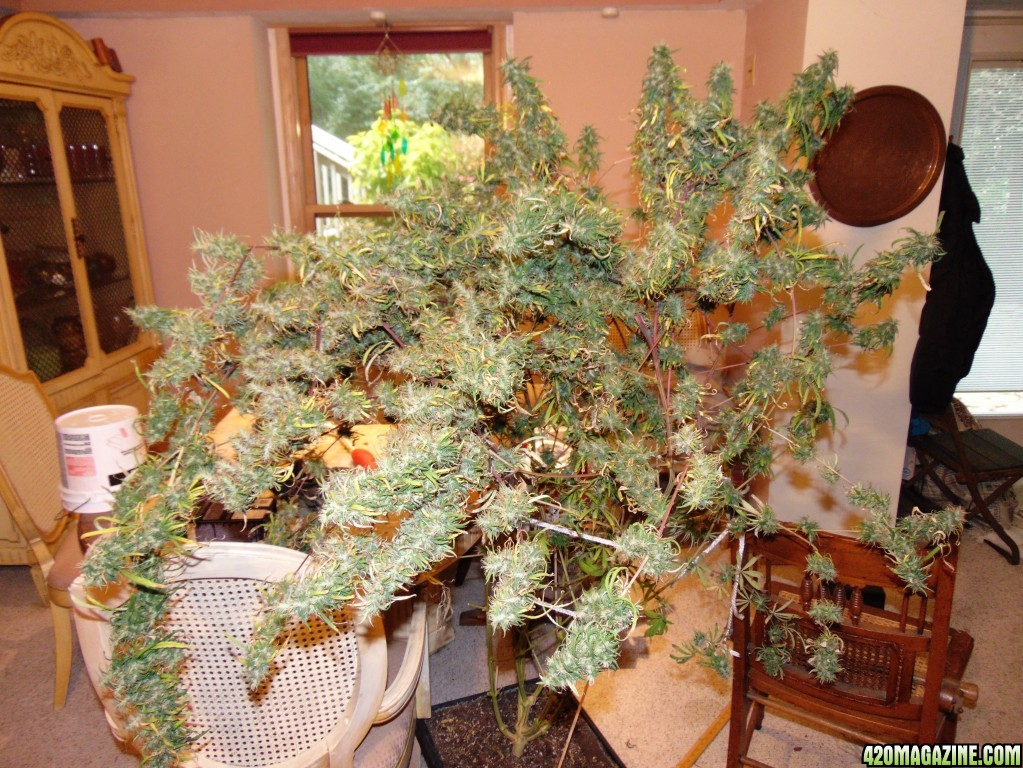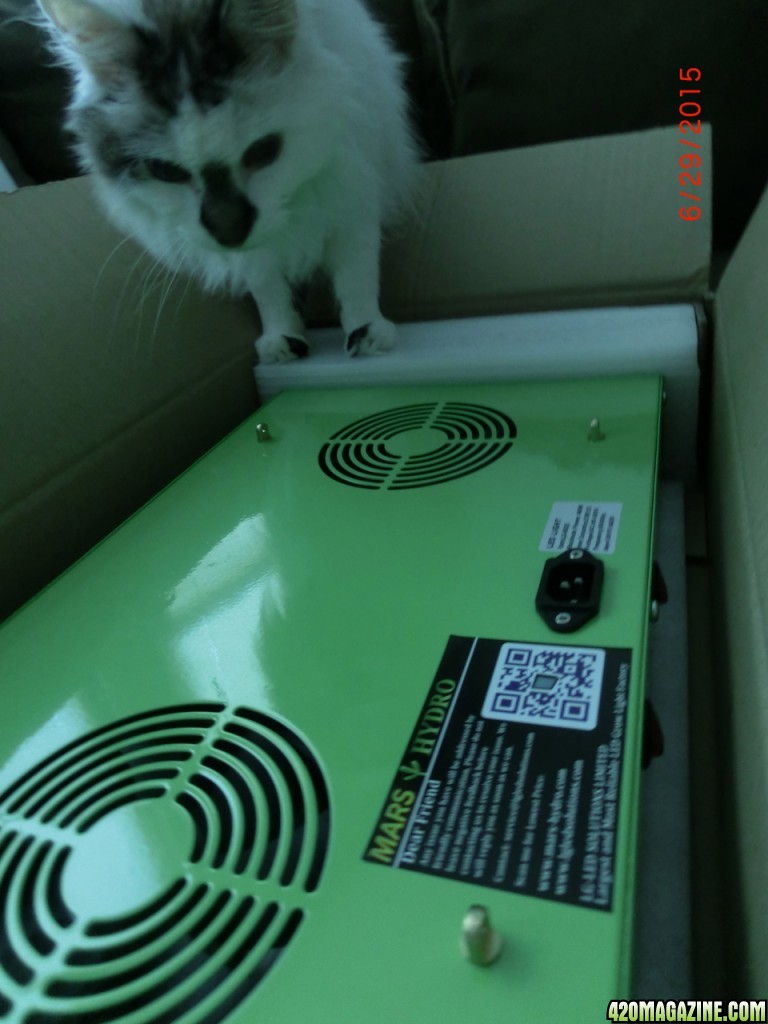have 7 strains of Auto seeds in hand.
Nice! What are they (and which breeders)?
It seems the vast majority of Autos on the market are Indica or majority Indica hybrids.
Dutch Passion has some newer ones that I'd like to get the chance to try some day - I think they're Auto Ultimate, Auto Euphoria, and Think Different. IDK off the top of my head how much sativa is in their respective genetics (if any), but IIRC they are supposed to get large, potent, and happy. Sweet Seeds has some auto-flowering strains that look to be significantly better than the earlier auto strains, tasty, pretty, and (apparently) reasonably potent. Again, IDK the percentages of sativa in them.
I get the feeling that a straight sativa/autoflower cross (bred enough to consistently auto-flower) would be likely to be quite the low-production plant (more so than its sativa parent). That's just a guess, but it could explain why there are so few "pure" (other than the ruderalis a/f gene) sativas, when I'd think that they'd almost be
THE reason to have auto-flowering strains in the first place (ability to plant a "sativa" outdoors just about anywhere and still see it finish before the temperatures fell too much for cannabis).
I have read through many of the Auto threads on 420magazine, and as usual came away with a wide variety of experiences and opinions. That's a blessing and a curse, I just have to try and weed out the disinformation.
There will be some misinformation. People hear/read things and pass it along without personally verifying it... sometimes that perpetuates a statement until it seems to get accepted as fact. But I think a lot of the "variety" is because there are so many variables in play between one person's cannabis garden and another's (or, often, even between two different grows by the same person). IOW, if you happen to see two differing opinions/experiences in regards to the same thing, take a look and see if there are differences in the two grows (even the grower's personality could be a factor - lazy procrastinators might have poor results from a method that suits a really anal OCD type).
1. It seems best to plant the auto in it's final container size and not upsize the container once or twice
There still seems to be some debate about this. I might guess (since I am
NOT an experienced a-f grower) that it depends on the media and watering schedule/method a little bit (a five-gallon pot, watered to even dampness with a tiny plant in it, will take a while to dry out - because more depends on evaporation than transpiration in this case). It does seem to be true that restricting the taproot's growth tends to be a cue for the plant to get on with the program - and that plants' roots often get to this point far quicker than many people expect.
So...
Assuming the typical grower, it might be safe to say that placing the seed/seedling into its "final" pot will tend to produce larger plants, everything else being equal. But some folks will be (and have been, it appears) the exception to the rule.
2. Run the light cycle at 18/6 throughout the plants life
I think (again, I don't
know) that the thing depends more on how much light-energy it receives
per day than solely on how many hours' worth of light it receives. I'd like to be able to grow several (as many as would comfortably fit) in two areas of the same size/shape, but with one being illuminated by a 400-watt HPS for 18 hours per day and the other one being illuminated by a 600-watt HPS for 12 hours per day. But I'd also like to have a fireman's pole to get downstairs and an elevator to get pack up instead of these hateful stairs, lol. Like Pop used to say, wish in one hand and...
3. Feed and water as a regular non Auto plant
Eh... Sort of, but some things that might not matter to the grower of phototropic plants could end up being more significant for those who grow auto-flowers. Cut a plant's nitrogen too soon and it might just start flowering earlier than you'd like - and give you a smaller yield at harvest time because of that. Keep feeding nitrogen at high levels and it
could delay flowering (which might be an unwanted result). The "keep slowly ramping up the nutrient concentrations until you see mild burning at the leaf tips, then back it off a notch" approach might be a bad one to take with autos, due to their more finite life, since there would seem to be less time to recover from stress events. Again, these are guesses.
4. Generally provide the same environmental conditions as you would for a plant maturing in the Fall timeframe
Auto-flowering plants go through the same phases of life that phototropic ones do; vegetative growth, flowering stretch, flowering post-stretch. The plant just switches from vegetative to flowering regardless of the light/dark cycles. AfaIK, that's pretty much the only real difference. Given that, I'd think that the optimum environmental conditions would be the same as with phototropic strains (of the same "type"), they'd just change quicker. If you germinate and grow out a phototropic strain under 12/12 light, it would give comparable behavior - it'll be in the vegetative phase until it is sexually mature, then flower with the first 40% of the flowering being the stretch phase, and the remaining 60% sees no significant vertical growth. In fact, there was a sponsor here some years back who advocated growing his strains in this manner. I'd probably think about recommending the same thing, lol, because I'd tend to sell a lot more seeds if my customers were always growing from seeds instead of finding/keeping mother plants and producing clones.
5. Not prune too much (maybe go for four main colas)
I generally only prune (top) if I'm trying to keep a plant small and it's not cooperating. If I want bushier growth and/or am trying to get the side branches to catch up with the main one, I don't cut that main stem - I tie it down, so that the plant redistributes the auxins from that top stem to those that are now highest on the plant. Then, if/when I'm satisfied, I can release that main stem... because the plant still
has a main stem at that point; I didn't lose its mass by removing it.
I've been thinking (oh no!

)... If I grow some auto-flowering plants in two-liter bottles, close together, I'll undoubtedly see some lower/side branching that I'll wish to remove. If I have some leftover space (questionable, but one never knows) at that time, I might end up sticking them into soil or perlite. They'll be the same age as the plants they came from, so I would expect rather small plants (even in regards to auto-flowers in general) by harvest time. But removing such things from closely-planted plants shouldn't hurt yields; actually, it should
increase them, IMHO. And if the cuttings are just used as "filler" in the odd space or corner, they - collectively - might contribute a not insignificant amount to the overall yield (even four grams per clone... multiplied by seven clones... equals a lid, lol).
Does any of this ring true, or am I way off base?
Looks like you know at least as much as I do about these critters, and probably more. I'm going to (attempt to) "shut up" now and see what others have to "say" so that I can increase my knowledge. Thank you very much for asking these questions.



 .
.  Damned stuff breaks off by itself at a certain length now. Saved me hundreds in haircuts, though.
Damned stuff breaks off by itself at a certain length now. Saved me hundreds in haircuts, though. 
 Got up this morning and took my morning capsule of CBD Critical Cure, as is my habit. Then I made porridge with canna butter, completely forgetting that it was a strong concentration of Carnival, not my typical butter made with trim. Then I took a few hits with Pigeons 420 and chose Malawi. Went out shopping with the daughter, and I was so intoxicated I was stumbling and slurring my words, my mouth was so dry. Came home to fall across the bed and sleep it off for four hours.
Got up this morning and took my morning capsule of CBD Critical Cure, as is my habit. Then I made porridge with canna butter, completely forgetting that it was a strong concentration of Carnival, not my typical butter made with trim. Then I took a few hits with Pigeons 420 and chose Malawi. Went out shopping with the daughter, and I was so intoxicated I was stumbling and slurring my words, my mouth was so dry. Came home to fall across the bed and sleep it off for four hours. 









 OH!: . I really need to get a great big magnifying glass :icon_roll .
OH!: . I really need to get a great big magnifying glass :icon_roll .